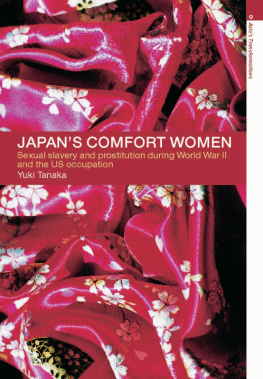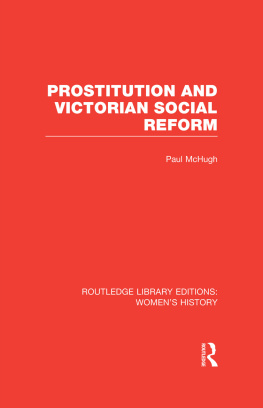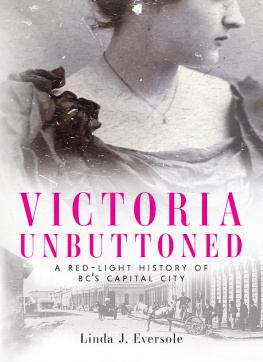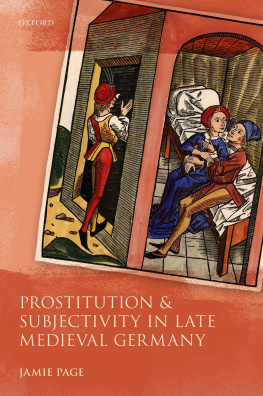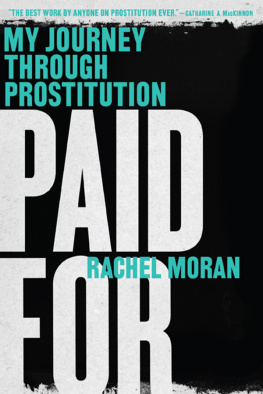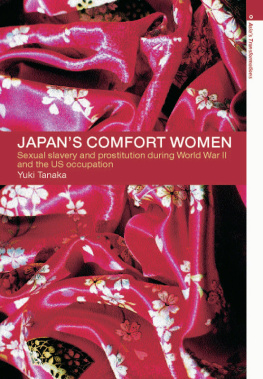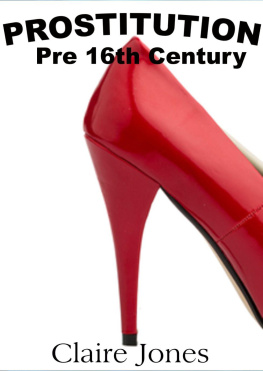ROUTLEDGE LIBRARY EDITIONS:
WOMEN'S HISTORY
THE MAGDALENES
The Magdalenes
Prostitution in the nineteenth century
Linda Mahood
Volume 25
First published in 1990
This edition first published in 2013
by Routledge
2 Park Square, Milton Park, Abingdon, Oxon, OX14 4RN
Simultaneously published in the USA and Canada
by Routledge
711 Third Avenue, New York, NY 10017
Routledge is an imprint of the Taylor & Francis Group, an informa business
1990 Linda Mahood
All rights reserved. No part of this book may be reprinted or reproduced or utilised in any form or by any electronic, mechanical, or other means, now known or hereafter invented, including photocopying and recording, or in any information storage or retrieval system, without permission in writing from the publishers.
Trademark notice : Product or corporate names may be trademarks or registered trademarks, and are used only for identification and explanation without intent to infringe.
British Library Cataloguing in Publication Data
A catalogue record for this book is available from the British Library
ISBN: 978-0-415-53409-3 (Set)
eISBN: 978-0-203-10425-5 (Set)
ISBN: 978-0-415- 62353-7 (Volume 25)
eISBN: 978-0-203-10405-7 (Volume 25)
Publishers Note
The publisher has gone to great lengths to ensure the quality of this reprint but points out that some imperfections in the original copies may be apparent.
Disclaimer
The publisher has made every effort to trace copyright holders and would welcome correspondence from those they have been unable to trace.
For my Grandparents
Bill and Verna Hoy
Contents
|
|
|
'Harlots, witches and bar-maids': Prostitution, disease,
and the state, 14971800
|
A medical model of immorality: The Glasgow
Lock Hospital
|
|
|
|
|
Friendless, fallen, and inebriate
women: The transformations
|
Part three: The Glasgow system: Police repression
or veiled regulation?
|
|
Conclusion: Prostitutes, Magdalenes, and wayward girls:
Dangerous sexualities of working-class women
|
|
|
The contributions of many people have made it a pleasure to work on this project. I would like to thank Mary Murray for first suggesting it to me and Eleanor Gordon for providing me with criticism, advice, and an ear for my ideas, Barbara Littlewood, J.H. Treble and Dave Frisby for supporting it as a dissertation, the members of the Glasgow University Research Unit on Migration and Racism, the West of Scotland Women's Research Group, and the contributors to the Scottish Women's Bibliography for their friendship, moral support, and interest in my work throughout my stay in Glasgow. Anne Dunlop and Joanne Trantor have read and commented on parts one and two of the manuscript. For assistance of a different kind, I wish to acknowledge the 'emergency' financial aid that I have received from the University of Glasgow Sociology Department and the British Sociological Association's 'Hardship' fund: without it this project would certainly have suffered.
The labour of librarians and archivists throughout Scotland and England has contributed to this research. I wish to express my thanks to the librarians at the Universities of Aberdeen, Edinburgh, Glasgow, and St Andrews. The archivists at the Mitchell Library, the Strathclyde Regional Archives, the Edinburgh Public Library, the Scottish National Archives, Mr Pierce at the Royal Faculty of Procurators Library, and, finally, the staff at the British Museum and Fawcett Library for their interest in my progress. The material in appears in an abridged form in David McCrone, Stephen Kendrick, and Patricia Straw (eds) (1989) The Making of Scotland: Nation, Culture and Social Change, Edinburgh University Press; E. Breitenbach and E. Gordon (eds), The World is III Divided: Women and Work in Scotland, 18301940 volume 1, Edinburgh University Press (forthcoming, 1990); and Women's Studies International Forum, Special Issue: British Feminist Histories (forthcoming, 1990). I thank the publishers for permission to re-use the material.
Finally, I am grateful to B. Singh Bolaria, Professor and head of the Department of Sociology at the University of Saskatchewan, Canada, for his valuable assistance. To Vic Satzewich, who has read and discussed the entire manuscript with me, I would like to say thank you for making it so easy for me to do my research and, among other things, for Lucy. Above all, I would like to thank Barbara Littlewood, who has contributed greatly to the writing of this book and gone beyond a supervisor's 'call of duty' so many times.
Linda Mahood
1988
In 1986 an eminent Scottish historian wrote: 'The history of the family, and of child upbringing and the place of women within and without the home, is so neglected in Scotland as to verge on becoming a historiographic disgrace.' At first glance a book which aspires to address this silence by focusing on prostitution must appear curious, to say the least. Today prostitution conjures up images of family breakdown, pornography, drugs, and most recently AIDS. But the relationship between prostitution and the social class and female gender roles which emerged within the mid-nineteenth-century social structure provides a particularly good opportunity to study some aspects of the experience of women in male-dominated society. This book examines four empirical and theoretical issues concerning prostitution in Scotland in the nineteenth century.
Beginning with the Scottish perspective and experience, this research arose initially out of an interest in the Contagious Diseases (C.D.) Acts which were enforced in parts of England and Ireland between 1864 and 1884. In her study of the impact of the Acts on Plymouth and Southampton, Judith Walkowitz argues that these 'technologies of power'success in suppressing street soliciting and brothels throughout Britain in areas where the Acts were not enforced. The question arises, then, what happened in Scotland? Did the women labelled as 'prostitutes' remain relatively unharassed and unstigmatized? In pursuit of answers to these questions, it became clear that technologies of power, technologies not unlike the C.D. Acts themselves, were already in place in Scotland. Some, like the lock hospitals and magdalene asylums, existed long before the C.D. Acts were passed. Others, like the system of police repression which I call the 'Glasgow system', were developed as a reaction to the Acts. The historical interest of the Glasgow system is that it was not confined to Scotland, but was adopted as a model for similar systems of police repression in English cities, most notably in Manchester and Leeds as well as in Edinburgh and other Scottish towns.
As this research progressed, it became clear that the Glasgow system could not be studied as an isolated historical entity, and this brings us to the second issue examined in this book. The public discourse on prostitution in Scotland did not commence with the implementation of the C.D. Acts in England. Tracts and essays on the state of Scottish morals had been published with increasing regularity throughout the century. Similarly, Scottish lock wards and magdalene asylums, which were among the first in the United Kingdom, began to open around the turn of the century. A great deal of discursive terrain had been covered by the time the Glasgow system was developed in the 1870s. This book, therefore, traces the public discourse on prostitution as it emerged throughout the century.


